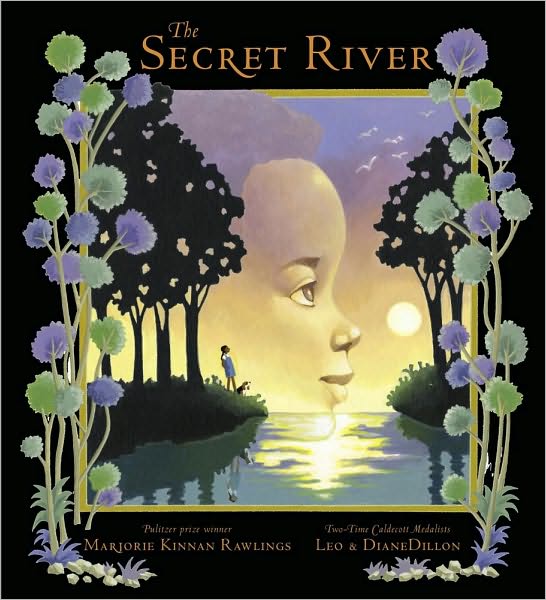
 Marjorie Kinnan Rawlings's (The Yearling) 1956 Newbery Honor book is just as relevant today as it was when it was published (posthumously) 55 years ago. New, lush illustrations by two-time Caldecott Medalists Leo and Diane Dillon lend the tale a mythic quality, and emphasize its theme of abundance. Young Calpurnia was "born to be a poet." When her father tells his family that "Hard times have come to the forest," and that with no fish to sell, he fears he will have to close his fish market, she does not worry. Instead, Calpurnia and her loyal dog, Buggy-horse, go outside to think about how she can catch some fish. As she contemplates what a fish would like to eat, the Dillons render a full-page painting of the heroine leaning against a tree whose leaves create an Escher-like fish pattern. On the opposite page, a silhouette image shows the girl attempting to enter a fish's mindset, the profile of her face encased within a fish's transparent body, its fins echoing the checked pattern of her dress. The artists quickly establish Calpurnia's oneness with nature and continue this visual connection throughout the elegantly designed book.
Marjorie Kinnan Rawlings's (The Yearling) 1956 Newbery Honor book is just as relevant today as it was when it was published (posthumously) 55 years ago. New, lush illustrations by two-time Caldecott Medalists Leo and Diane Dillon lend the tale a mythic quality, and emphasize its theme of abundance. Young Calpurnia was "born to be a poet." When her father tells his family that "Hard times have come to the forest," and that with no fish to sell, he fears he will have to close his fish market, she does not worry. Instead, Calpurnia and her loyal dog, Buggy-horse, go outside to think about how she can catch some fish. As she contemplates what a fish would like to eat, the Dillons render a full-page painting of the heroine leaning against a tree whose leaves create an Escher-like fish pattern. On the opposite page, a silhouette image shows the girl attempting to enter a fish's mindset, the profile of her face encased within a fish's transparent body, its fins echoing the checked pattern of her dress. The artists quickly establish Calpurnia's oneness with nature and continue this visual connection throughout the elegantly designed book.
With her bait and fishing pole in hand, Calpurnia and Buggy-horse set off to find Mother Albirtha, "the wisest person in the forest" (who bears a striking resemblance to Diane Dillon). A painting of an eye icon on the wise woman's wall, the peacock feather in her turban, and an eye-shaped pattern in the trees all suggest Mother Albirtha's keen powers of perception. As Mother Albirtha tells Calpurnia of a "secret river," she explains that the girl needs only to "follow her nose" to find it, and the leaves in the trees transform from eyes to fish patterns. Buggy-horse and the creatures of the forest help point Calpurnia in the right direction. When she has caught all that her fishing pole can carry, Calpurnia and her dog head home. It turns dark, and they lose their way. The once benign trees now appear to reach out grasping hands toward the duo; a menacing-looking owl stares down, and a bear stands in their path. Quick-thinking Calpurnia offers the animals some of her catch. The creatures, in turn, help guide her home. Calpurnia's feeling of plenty proves contagious: her father gives his customers fish on credit so they will have sustenance to do a good day's work; they repay him at day's end. When Calpurnia once again sets out with her dog for the secret river, she cannot find it. Mother Albirtha tells her, "Child, sometimes a thing happens once, and does not ever happen anymore." But she also says, "You can go there any time you want to. In your mind." In the closing image, the Dillons paint a sun-kissed portrait of the child's face, enveloped by the forest and the secret river. Fans of the artists' work on Eloise Greenfield's Honey, I Love cannot help but see a connection between these two heroines, both poets forever awake to the many gifts the world has to offer. A masterpiece.--Jennifer M. Brown

